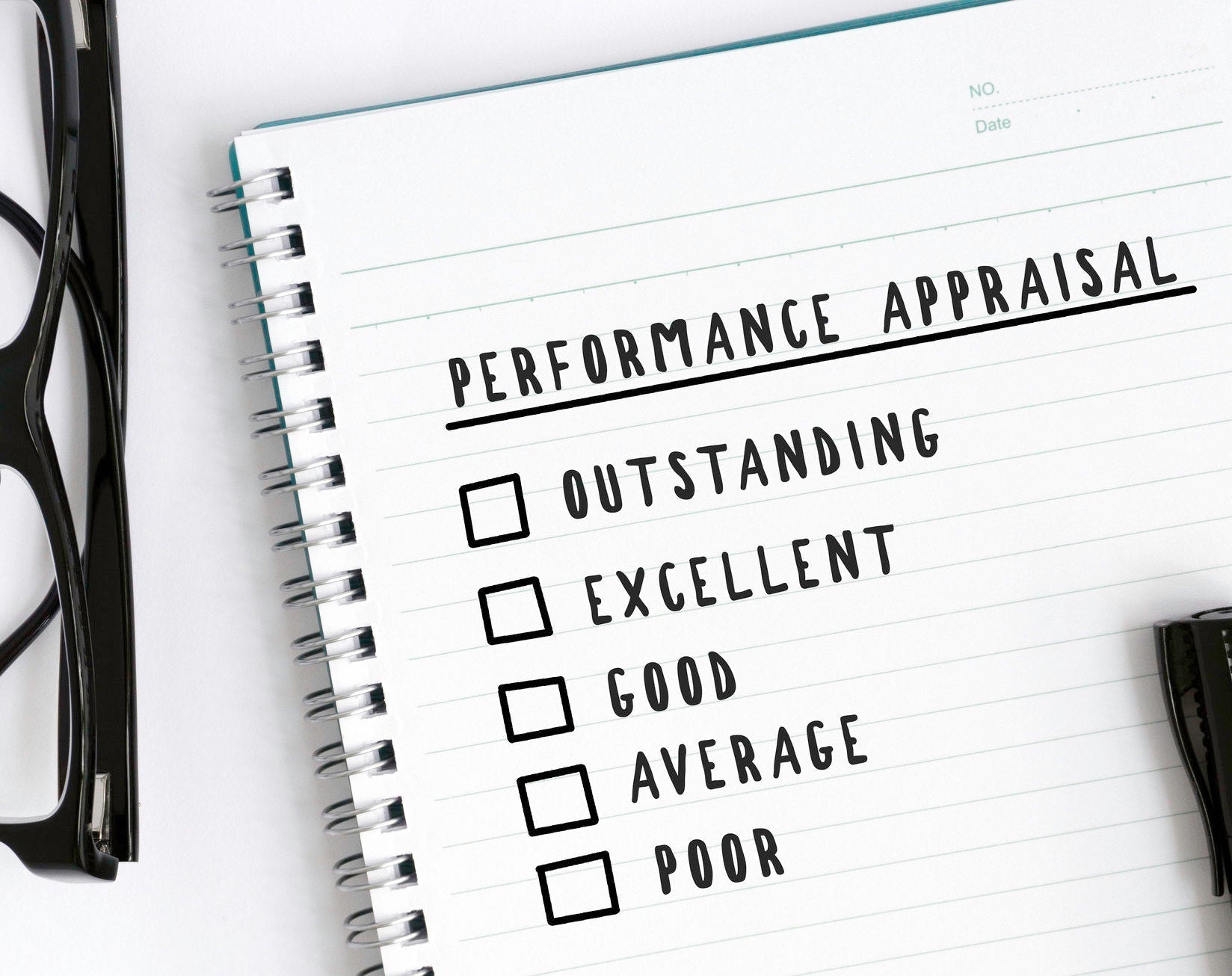They inspire dread in managers and employees alike but performance reviews can in fact be a gift for all involved – here’s why, and how to make reviews rewarding (really)
As annual treats go, a performance review (either giving or receiving) wouldn’t exactly be at the top of anyone’s list. Despite this, career coach Elizabeth Houghton is of the opinion that “feedback is a gift” – it just needs to be packaged and delivered correctly by both parties. Whether you’re due to give a performance review yourself or are nervously awaiting one, the following expert insights will make you see the often feared process in a whole new light. Follow these golden rules for giving great reviews and there will be no cowering by the kettle ever again.
1. Abandon annual reviews
This seems like a very counterintuitive starting point, we know, but the stats bear us out. A study by employee experience platform Kazoo reveals that workers whose managers engage in regular, “real-time coaching conversations” are 67% more likely to feel that performance reviews lead to better professional outcomes compared to those that only received annual reviews. Employees aren’t machines and a yearly MOT won’t cut it according to Elizabeth:
“It doesn’t make sense to wait months to give feedback – it’s most effective when it’s timely. Performance concerns or positive feedback should be given in the moment; this will ensure that feedback is more impactful. Why delay supporting the growth of a colleague? Why not support their improvement, now?”
Quite. Checking in regularly also removes a great deal of anxiety, build-up burden in terms of admin and assessment on both sides and the possibility of any unexpected topics coming up. 35 Thousand founder, CEO and executive coach Misty Reich stresses that, if there are any surprises at the end of a performance review, you’re probably doing it wrong. Keeping it regular is the key to reviews that garner results according to Misty:
“I would say the ideal timetable would be to schedule quarterly performance calibrations. If your company still utilises an annual review model, that ‘final’ meeting should be a culmination and tally of what the year added up to in terms of goals achieved and expectations.”
Company leaders assess finances by quarter, at the bare minimum, so it only makes sense to check in with the employees making up your balance sheets at least as often. Jo Clare, senior consultant at business and career development organisation The Oakridge Centre, affirms that a shift away from annual performance reviews reflects the nature of modern working culture too:
“Companies are moving away from annual or bi-annual performance review meetings as there’s a need for all of us to be more agile and flexible. We’re working in an increasingly ever-changing, fast-paced world, so on-going dialogue is essential.”
2. Prep like a boss
Because, you are one, and it’ll make appraisals far smoother from start to finish. Planning ahead has the potential to turn a scenario akin to pulling teeth into a literal meeting of minds if you adhere to a few key preparation precepts.
As well as regularly and honestly noting employee achievements, targets and areas of growth, Misty advises giving your direct report the time and space to reflect on their own performance prior to any formal appraisal.
“Ask your employee to send over a summary self-review in advance alongside any data or metrics that they feel is relevant to their performance. This will give you a hugely helpful insight into how to frame your discussion most effectively.”
Compiling a self-evaluation form with open-ended questions that encourage your report to give feedback on how they feel that they are performing as an individual and within the team at large will prompt meaningful, productive conversation and help you to tailor your agenda beforehand. Once you’ve gathered all the goods (and growth areas), set about structuring the meeting. Misty’s blueprint keeps things simple:
“Divide your thoughts and comments into two categories: ‘what I appreciate’ and ‘how you could be even more effective’.
“Begin walking through what you appreciate about your employee and their results – most of the time the positives far outweigh the ‘opportunity to improve’ elements’ and helping them to identify and continue doing the things that they are doing well is as important as course correction in areas that aren’t quite where they need to be yet.”
Whichever category you’re focusing on, Elizabeth recommends “Frequently revisiting how you would like to receive the feedback you’re delivering; ensure that you’re empathetic and supportive throughout.” Speaking of which…
3. Go 360º
Rather than top down assessments where you play judge and jury, senior consultant at The Oakridge Centre Judith Fraser emphasises that it’s vital to establish a “feedback culture” so that all members of your organisation feel heard. Rather than making assumptions about an employee’s performance or behaviour, prioritise asking questions and seeking feedback on your own management style and how you can best support your workforce. Two-way conversations take the guesswork out of expectations and tricky scenarios in particular, plus they foster respect. Misty notes that this is the cornerstone of effective communication, which in turn leads to rewards all round:
“Build an authentic, trusting relationship with anyone you will need to give feedback to in the future – everything is easier when it’s coming from a place of trust.”
Happily, the CIPD Good Work Index 2020 found that, among a sample of 5000 UK workers, 76% reported having a positive relationship with their immediate boss, proving that the majority of office alliances not only survive performance review meetings and the like, but thrive on them. We’re not denying that sticky issues can’t arrive, however.
4. Don’t drop bombs
The absolute worst way to deliver less than glowing feedback? Elizabeth calls it:
“Never just drop a bomb like ‘You’re not performing to the required level in x’ and then end the conversation or walk away. Your job as a leader is to support your team member’s development. Be clear and get straight to the point, but always in a constructive, empathetic manner.”
Misty agrees that “Making sure that your heart and head are in a good place before you go into the meeting” is fundamental:
“Few of us enjoy being evaluated by authority figures so if your team member does get upset or angry, my best advice is to create space for this.
“Don’t fill silences or rush your employee and, particularly if you anticipate that a subject could cause tension, perhaps adapt your approach and ask in advance how your report likes to receive feedback. This will make them feel more in control of how messages are delivered and how they feel in the meeting and in turn it will give you insight of how they might respond to points raised.”
We’re not always going to be on the same page personally or professionally, and that’s okay according to Elizabeth:
“Make room for dissent, disagreement and diversity of opinion. Be transparent, always explain your reasoning but above all communicate feedback as a development opportunity and express your ideas with warmth and compassion.”
5. Money talks
Finally, Misty advocates taking a clear-cut approach to talking cold, hard cash when initially scheduling the review meeting:
“Manage expectations from the off by stating that you will be discussing how the year went in terms of performance and what can be anticipated in regards to pay and reward, or that you will be discussing how the year went in terms of goals and will arrange a separate, follow up meeting to speak about any salary changes or bonuses.”
Either way, Misty states that “It’s always beneficial to do your homework beforehand so that you know exactly where your team member stands in terms of compensation in comparison to peers”. If or when money comes up, Misty emphasises the importance of listening and, above all, being honest:
“Never play games – be as transparent as you can possibly be. People may not always be happy with the answer that they get but if you hear them out and communicate authentically then they’re highly likely to respect you and trust that you have their best interests at heart.”
In short, be fair, big up strengths over weaknesses (Jo encourages an 80/20 ratio) and do it all again sometime soon. The gains could just be huge for everyone.
If you enjoyed reading this article then you will definitely enjoy reading ‘How to win at difficult conversations’ here



